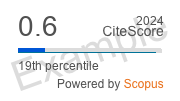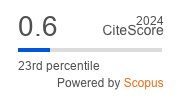Assessment of epicardial left ventricular pacing in children
https://doi.org/10.29001/2073-8552-2025-2665
Abstract
Introduction. The relevance of this work is due to the high incidence of pacemaker-induced cardiomyopathy (PICM) associated with chronic right ventricular pacing, reaching up to 30% in the pediatric population. Current evidence suggests the benefits of left ventricular (LV) pacing in preserving contractile function and intraventricular synchrony. This study presents the immediate and longterm results of epicardial LV pacemaker lead implantation in children.
Aim: To retrospectively assess epicardial LV pacing in children with atrioventricular blocks (AVB).
Material and methods. This single-center retrospective study included patients with clinically significant atrioventricular (AV) block who underwent implantation of an epicardial pacing system with the ventricular lead localized in the LV apex. In the early and late postoperative periods, all patients underwent a comprehensive examination, including: 12-channel electrocardiography (ECG) with assessment of the QRS complex width, pacemaker function control, 24-hour Holter monitoring, echocardiography (EchoCG) according to a standard protocol with determination of LV contractile function parameters, chest X-ray in the frontal and lateral views. To minimize the influence of anthropometric variability in childhood, such EchoCG parameters as LV end-diastolic volume, as well as the sizes of the left and right atria were expressed as a percentage of the expected values, taking into account weight and height characteristics. Additionally, intraventricular dyssynchrony (IVD) was assessed using tissue Doppler ultrasonography and global longitudinal strain (GLS) of the LV using Speckle-tracking echocardiography.
Results. From 2013 to 2024, 36 patients underwent primary implantation of an epicardial pacemaker system with the ventricular lead localized at the apex of the LV (33 dual-chamber systems in DDD mode, 3 single-chamber systems in VVI mode). The age of patients at the time of surgery was 4 [1;7] years, from 14 days to 14 years. There were no clinical signs of heart failure and echocardiographic markers of PICMP in the entire group in the early postoperative period and during long-term follow-up (up to 9 years). During longterm follow-up (up to 9 years), all patients had no clinical signs of heart failure and echocardiographic markers of PICMP, including IVD and increased LV GLS.
Conclusion. Epicardial LV pacing in children with AVB demonstrates favorable long-term results, including preservation of systolic function, intraventricular synchrony, and absence of signs of PICMP. The data obtained confirm the advisability of choosing the LV apex as the optimal implantation point in this category of patients.
About the Authors
E. V. YakimovaRussian Federation
Evgenia V. Yakimova - Junior Research Scientist, Department of Pediatric Cardiology, Cardiology Research Institute, Tomsk NRMC.
111a, Kievskaya str., Tomsk, 634012
O. Yu. Dzhaffarova
Russian Federation
Olga Yu. Dzhaffarova - Cand. Sci. (Med.), Senior Research Scientist, Department of Pediatric Cardiology, Cardiology Research Institute, Tomsk NRMC.
111a, Kievskaya str., Tomsk, 634012
L. I. Svintsova
Russian Federation
Liliya I. Svintsova - Dr. Sci. (Med.), Leading Research Scientist, Department of Pediatric Cardiology, Cardiology Research Institute, Tomsk NRMC.
111a, Kievskaya str., Tomsk, 634012
A. V. Smorgon
Russian Federation
Andrey V. Smorgon - Junior Research Scientist, Laboratory of Ultrasound and Functional Research Methods, Cardiology Research Institute, Tomsk NRMC.
111a, Kievskaya str., Tomsk, 634012
E. A. Svyazov
Russian Federation
Evgeniy A. Svyazov - Cand. Sci. (Med.), Head of the Cardiac Surgery Department, Cardiology Research Institute, Tomsk NRMC.
111a, Kievskaya str., Tomsk, 634012
E. O. Kartofeleva
Russian Federation
Elena O. Kartofeleva - Junior Research Scientist, Department of Pediatric Cardiology, Cardiology Research Institute, Tomsk NRMC.
111a, Kievskaya str., Tomsk, 634012
References
1. Gavaghan C. Pacemaker Induced Cardiomyopathy: An Overview of Current Literature. Curr. Cardiol. Rev. 2022;18(3):e010921196020. https://doi.org/10.2174/2772432816666210901111616.
2. Somma V., Ha F.J., Palmer S., Mohamed U., Agarwal S. Pacinginduced cardiomyopathy: A systematic review and meta-analysis of definition, prevalence, risk factors, and management. Heart Rhythm. 2023;20(2):282–290. https://doi.org/10.1016/j.hrthm.2022.09.019.
3. Merchant F.M. Pacing-induced cardiomyopathy: just the tip of the iceberg? Eur. Heart J. 2019;40(44):3649–3650. https://doi.org/10.1093/ eurheartj/ehz715.
4. Dzhaffarova O.Yu., Svintsova L.I., Krivolapov S.N., Perevoznikova Yu.E., Smorgon A.V., Kartofeleva E.O. First experienceof hissial cardiac pacing in pediatric patients. Bulletin of Arrhythmology. 2024;31(3):25–32. (In Russ.). https://doi.org/10.35336/VA-1334.
5. Kovanda J., Ložek M., Ono S., Kubuš P., Tomek V., Janoušek J. Left ventricular apical pacing in children: feasibility and long-term effect on ventricular function. Europace. 2020;22(2):306–313. https://doi.org/10.1093/europace/euz325.
6. Torpoco Rivera D.M., Sriram C., Karpawich P.P., Aggarwal S. Ventricular functional analysis in congenital complete heart block using speckle tracking: Left ventricular epicardial compared to right ventricular septal pacing. Pediatr. Cardiol. 2023;44(5):1160–1167. https://doi.org/10.1007/s00246-022-03093-7.
7. Cantinotti M., Capponi G., Marchese P., Franchi E., Santoro G., Assanta N. et al. Normal values for speckle-tracking echocardiography in children: a review, update, and guide for clinical use of speckle-tracking echocardiography in pediatric patients. J. Clin. Med. 2025;14(4):1090. https://doi.org/10.3390/jcm14041090.
8. Shah M.J., Silka M.J., Silva J.N.A., Balaji S., Beach C.M., Benjamin M.N. et al. Writing Committee. PACES expert consensus statement on the indications and management of cardiovascular implantable electronic devices in pediatric patients. Heart Rhythm. 2021;18(11):1888–1924. https://doi.org/10.1016/j.hrthm.2021.07.038.
9. Zareba W., Klein H., Cygankiewicz I., Hall W.J., McNitt S., Brown M. et al. MADIT-CRT investigators. effectiveness of cardiac resynchronization therapy by QRS morphology in the Multicenter Automatic Defibrillator Implantation Trial-Cardiac Resynchronization Therapy (MADITCRT). Circulation. 2011;123(10):1061–1072. https://doi.org/10.1161/CIRCULATIONAHA.110.960898.
10. Silvetti M.S., Colonna D., Gabbarini F., Porcedda G., Rimini A., D'Onofrio A. et al. New guidelines of pediatric cardiac implantable electronic devices: What is changing in clinical practice? J. Cardiovasc. Dev. Dis. 2024;11(4):99. https://doi.org/10.3390/jcdd11040099.
11. Chung M.K., Patton K.K., Lau C.P., Dal Forno A.R.J., Al-Khatib S.M., Arora V. et al. 2023 HRS/APHRS/LAHRS guideline on cardiac physiologic pacing for the avoidance and mitigation of heart failure. Heart Rhythm. 2023;20(9):e17–e91. https://doi.org/10.1016/j.hrthm.2023.03.1538.
12. Romanowicz J., Ferraro A.M., Harrington J.K., Sleeper L.A., Adar A., Levy P.T. et al. Pediatric normal values and Z score equations for left and right ventricular strain by two-dimensional speckle-tracking echocardiography derived from a large cohort of healthy children. J. Am. Soc. Echocardiogr. 2023;36(3):310–323. https://doi.org/10.1016/j.echo.2022.11.006.
13. Silvetti M.S., Muzi G., Unolt M., D'Anna C., Saputo F.A., Di Mambro C. et al. Left ventricular (LV) pacing in newborns and infants: Echo assessment of LV systolic function and synchrony at 5-year follow-up. Pacing Clin. Electrophysiol. 2020;43(6):535–541. https://doi.org/10.1111/pace.13908.
14. Dambaev B.N., Dzhaffarova O.Yu., Svintsova L.I., Plotnikova I.V., Smorgon A.V., Krivolapov S.N. et al. Modern approaches to cardiac pacing in children with atrioventricular blocks: a literature review. Siberian Journal of Clinical and Experimental Medicine. 2020;3(35):14–31. (In Russ.). https://doi.org/10.29001/2073-8552-2020-35-3-14-31.
15. Tan R.B., Pierce K.A., Nielsen J., Sanatani S., Fridman M.D., Stephenson E.A. et al. DualVs Single-Chamber Ventricular Pacing in Isolated Congenital Complete Atrioventricular Block in Infancy. JACC Clin. Electrophysiol. 2025;11(5):987–998. https://doi.org/10.1016/j.jacep.2024.12.025.
16. Horenstein M.S., Karpawich P.P. Pacemaker syndrome in the young: do children need dual chamber as the initial pacing mode? Pacing Clin. Electrophysiol. 2004;27(5):600–605. https://doi.org/10.1111/j.15408159.2004.00493.x.
17. Janoušek J., van Geldorp I.E., Krupičková S., Rosenthal E., Nugent K., Tomaske M. et al. Working Group for Cardiac Dysrhythmias and Electrophysiology of the Association for European Pediatric Cardiology. Permanent cardiac pacing in children: choosing the optimal pacing site: a multicenter study. Circulation. 2013;127(5):613–623. https://doi.org/10.1161/CIRCULATIONAHA.112.115428.
18. Manolis A.A., Manolis T.A., Melita H., Manolis A.S. Congenital heart block: Pace earlier (Childhood) than later (Adulthood). Trends Cardiovasc. Med. 2020;30(5):275–286. https://doi.org/10.1016/j.tcm.2019.06.006.
19. Shah M.J., Silka M.J., Silva J.N.A., Balaji S., Beach C.M. et al. PACES expert consensus statement on the indications and management of cardiovascular implantable electronic devices in pediatric patients.Cardiol. Young. 2021;31(11):1738–1769. https://doi.org/10.1017/S1047951121003413
Supplementary files
Review
For citations:
Yakimova E.V., Dzhaffarova O.Yu., Svintsova L.I., Smorgon A.V., Svyazov E.A., Kartofeleva E.O. Assessment of epicardial left ventricular pacing in children. Siberian Journal of Clinical and Experimental Medicine. 2025;40(3):123-130. (In Russ.) https://doi.org/10.29001/2073-8552-2025-2665





.png)





























